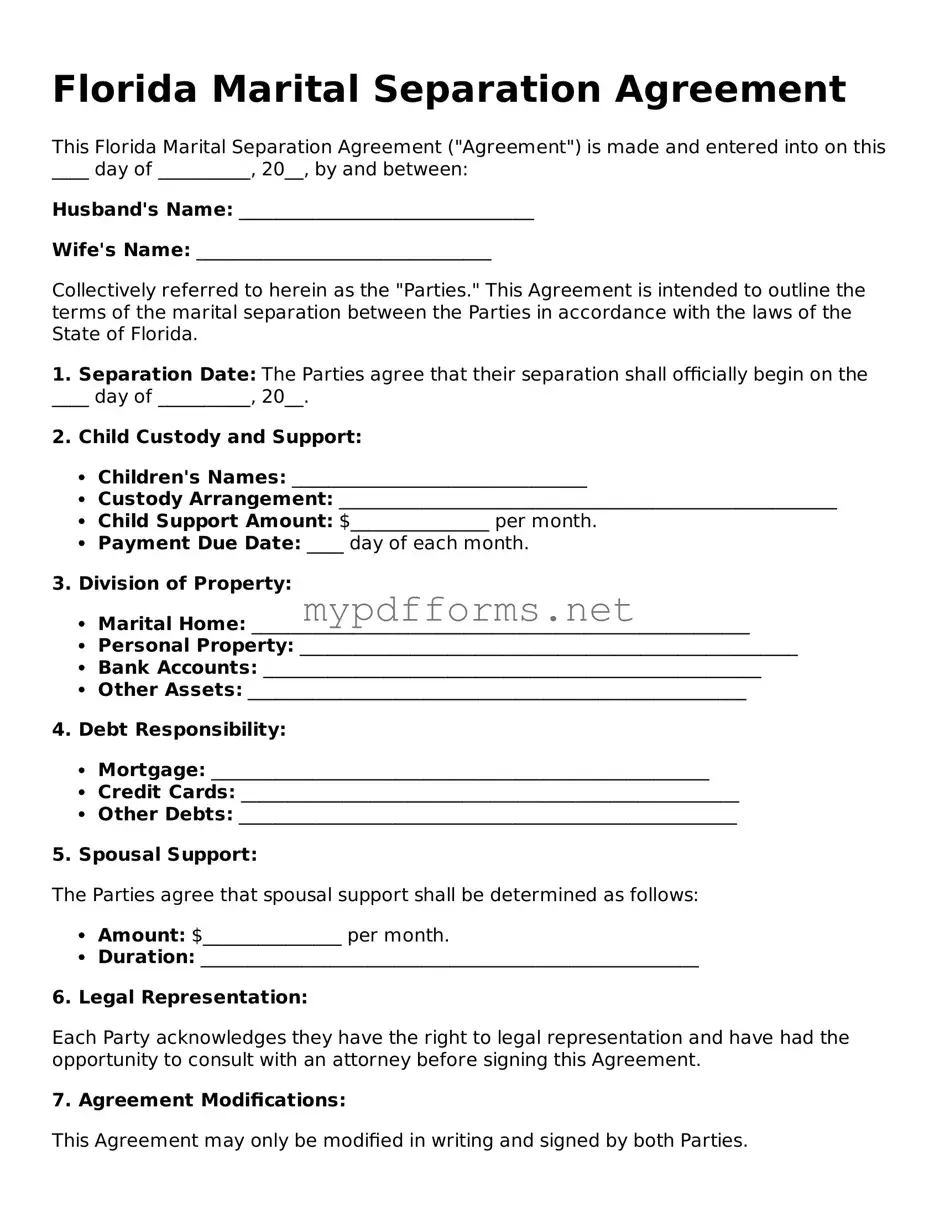The Florida Marital Separation Agreement is similar to a Divorce Settlement Agreement. Both documents outline the terms of property division, child custody, and support obligations. While a Marital Separation Agreement can be used while still legally married, a Divorce Settlement Agreement is finalized after the divorce process is complete. Both documents aim to protect the rights and interests of both parties.
Another similar document is the Child Custody Agreement. This agreement specifically focuses on the arrangements for the care and custody of children. It details visitation schedules, decision-making responsibilities, and child support. Like the Marital Separation Agreement, it prioritizes the well-being of the children involved and seeks to provide a clear framework for co-parenting.
The Property Settlement Agreement shares similarities with the Marital Separation Agreement as well. It specifically addresses how marital property will be divided between spouses. This document can be part of a separation agreement or a divorce settlement, ensuring both parties understand their rights regarding assets and debts accumulated during the marriage.
A Cohabitation Agreement is another related document. While typically used by unmarried couples living together, it serves a similar purpose in outlining rights and responsibilities. Like a Marital Separation Agreement, it can clarify issues such as property division and financial obligations, providing peace of mind for both parties.
The Prenuptial Agreement is also comparable. This document is created before marriage to outline how assets will be divided in the event of separation or divorce. It serves a preventative role, similar to a Marital Separation Agreement, which addresses issues that arise after the relationship has already begun to deteriorate.
A Separation Notice can be seen as a precursor to a Marital Separation Agreement. It formally notifies one spouse of the intent to separate. This document sets the stage for future negotiations and agreements regarding marital issues, much like the initial steps taken in a separation agreement.
The Child Support Agreement is another important document. This agreement specifically addresses financial support for children after separation. It outlines payment amounts, schedules, and any additional expenses. Like the Marital Separation Agreement, it aims to ensure that the needs of the children are met during and after the separation process.
For those navigating the complexities of motorcycle ownership transfer, it's vital to have the proper documentation in place. The Wisconsin Motorcycle Bill of Sale form serves as a key legal document that formalizes the sale or transfer of a motorcycle. To ensure a smooth process, it's advisable to download and complete the form, securing the rights of both the seller and buyer in the transaction, and aiding in registration and tax compliance.
Similarly, a Spousal Support Agreement focuses on financial support between spouses. This document specifies the terms of alimony or spousal support payments. It is often included in a Marital Separation Agreement, ensuring that both parties understand their financial responsibilities during the separation period.
Lastly, the Mediation Agreement can relate closely to the Marital Separation Agreement. If spouses choose to mediate their separation, this document outlines the terms agreed upon during mediation. It often leads to a formal Marital Separation Agreement, making sure that both parties are on the same page regarding their separation terms.
